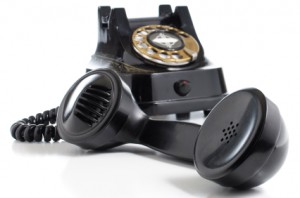To Tell or Not To Tell: The Three-Question Transparency Test
 We’ve all had those moments when we realized we knew something that someone else didn’t know and it was awkward. Think of the last time you were at lunch and you noticed your tablemate’s big, toothy grin adorned by a piece of big, leafy spinach—yep, that’s the kind of awkward we’re talking about. Even though most of us probably ascribe to a principle of Transparency—being honest, open, candid except when illegal or injurious to others—we’ve all made the choice at some point to say nothing.
We’ve all had those moments when we realized we knew something that someone else didn’t know and it was awkward. Think of the last time you were at lunch and you noticed your tablemate’s big, toothy grin adorned by a piece of big, leafy spinach—yep, that’s the kind of awkward we’re talking about. Even though most of us probably ascribe to a principle of Transparency—being honest, open, candid except when illegal or injurious to others—we’ve all made the choice at some point to say nothing.
The question is: did we do the right thing?
Use the Three Question Transparency Test to find out.
When a Lie by Omission Seems Like a Pretty Good Option
On the surface, it’s easy to say “Honesty’s the best policy!” Dig a little deeper and it’s not so clear.
Let’s look at some client examples to make this real—cases where you know something that he or she doesn’t (or might not), and you wonder “to tell or not to tell?”
– Imagine you’ve discovered a mistake in your work. The impact is relatively minor. Does it help or hurt the customer relationship to call attention to it?
– Or…you’ve discovered a mistake in your client’s work. The impact is significant. So is the likelihood of embarrassment (or worse) for them. Are you honoring or dishonoring the relationship by saying nothing?
– What if you learn something unfavorable about a competitor—one your customer is currently engaged with. Are you the hero or the jerk if you bring it up?
– And—maybe the worst of all—what do you do when you notice your client has spinach in her teeth?
End the Debate with the Three-Question Transparency Test
The next time you’re debating “to tell or not to tell,” ask yourself three questions:
1. Is my reason for not telling actually for my benefit, rather than theirs? Let’s face it: we human beings have a natural tendency to avoid scary, uncomfortable stuff—and that includes not telling things when telling is precisely what will honor the relationship. Is it really in the other person’s best interest to say nothing or is your desire to avoid your own discomfort creating a platform for a nice, juicy rationalization?
2. If I don’t tell and he finds out later, will he feel misled? This question invites you to see the situation from the other person’s vantage point—always a good practice when it comes to relationship-building. (By the way, if you’re banking on the fact that he won’t find out later, check your probabilities…and your motives.)
3. Would I tell her if she were my friend? This is my favorite question because it really cuts to the chase and invites us to set aside the arms-length decorum (often masked as “professionalism”) that defines most business relationships.
If at any point your answer is yes, do not pass Go, do not collect $200. Say what needs to be said (with compassion and diplomacy, of course – caveats help immensely.)
An Even Simpler Test
If three questions seem like too many, here’s the ultimate litmus test. Thanks go to Chip Grizzard, CEO of Grizzard Communications Group, who recently shared these words of wisdom. Chip says, “If you’re expending any energy on the debate, then it probably means you should say something.”
It doesn’t get much simpler than that.
In Theory and In Practice
While the principle of Transparency sounds good in theory, it’s actually very hard to live by. It takes courage. It takes a willingness to get comfortable being uncomfortable. It takes a commitment to removing yourself from the equation. And it takes a certain level of discernment to figure out when it’s hurting versus helping to sidestep the truth, the whole truth, and nothing but the truth.
Use the Three-Question Transparency Test—or the simpler “Grizzard Gut Check”—the next time you wonder whether to tell or not to tell.

 How many times do we hear from someone out of the blue and wonder what it is they are after?
How many times do we hear from someone out of the blue and wonder what it is they are after? Beginning just three years ago, some large firm legal fees reached that amount – about $17/minute – providing fodder for legal bloggers, and Internet articles on a variety of topics, including
Beginning just three years ago, some large firm legal fees reached that amount – about $17/minute – providing fodder for legal bloggers, and Internet articles on a variety of topics, including  Story 1: Don’t Do This
Story 1: Don’t Do This This is week three for me of a four-week road trip. I’m getting a little loopy, but am collecting some wonderful client experiences, lessons and stories. Here’s one from a British account executive.
This is week three for me of a four-week road trip. I’m getting a little loopy, but am collecting some wonderful client experiences, lessons and stories. Here’s one from a British account executive.